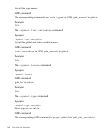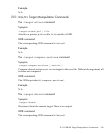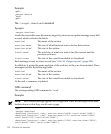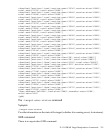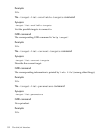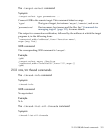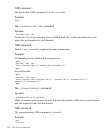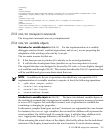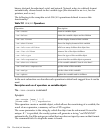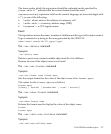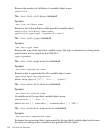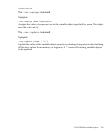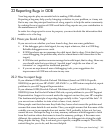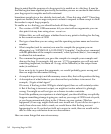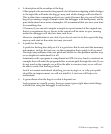
binary, decimal, hexadecimal, octal, and natural. Natural refers to a default format
automatically chosen based on the variable type (like decimal for an int, hex for
pointers, and so on.).
The following is the complete set of GDB/MI operations defined to access this
functionality:
Table 21-1 GDB/MI Operations
DescriptionOperation
create a variable object
-var-create
delete the variable object and its children
-var-delete
set the display format of this variable
-var-set-format
show the display format of this variable
-var-show-format
tells how many children this object has
-var-info-num-children
return a list of the object children
-var-list-children
show the type of this variable object
-var-info-type
print what this variable object represents
-var-info-expression
is this variable editable? does it exist here?
-var-show-attributes
get the value of this variable
-var-evaluate-expression
set the value of this variable
-var-assign
update the variable and its children
-var-update
In the next subsection we describe each operation in detail and suggest how it can be
used.
Description and use of operations on variable objects
The -var-create command
Synopsis
-var-create {name | "-"}
{frame-addr | "*"} expression
This operation creates a variable object, which allows the monitoring of a variable, the
result of an expression, a memory cell or a CPU register.
The name parameter is the string by which the object can be referenced. It must be
unique. If '-' is specified, the varobj system will generate a string “varNNNNNN”
automatically. It will be unique provided that one does not specify name on that format.
The command fails if a duplicate name is found.
356 The GDB/MI Interface



